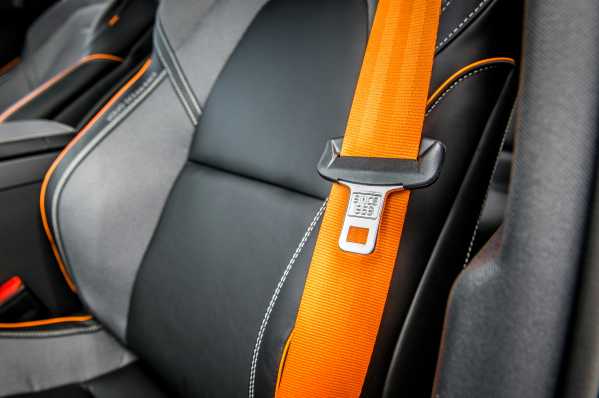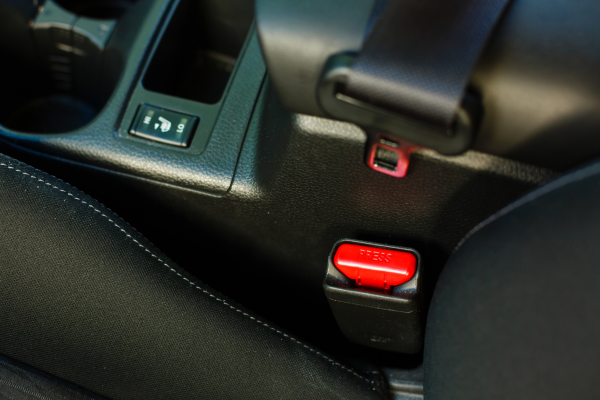Vehicle Safety
Preventing Seat Belt Choking: Tips for Adjusting Your Belt Properly

Preventing Seat Belt Choking: Tips for Adjusting Your Belt Properly
Importance of Proper Seat Belt Adjustment
Seat belts are indispensable for car safety, significantly reducing the risk of severe injury or death during an accident. However, improper adjustment can lead to discomfort and even dangerous situations, such as seat belt choking. Read on to discover essential tips for adjusting your seat belt properly to ensure maximum safety and comfort.
Properly adjusted seat belts serve two critical functions. Firstly, they secure the occupant in the seat, minimizing movement during a collision. Secondly, they distribute the forces generated during a crash, reducing the risk of injury. To avoid discomfort and potentially hazardous situations like seat belt choking, it's essential to know how to adjust your seat belt properly.
Understanding Seat Belt Anatomy
A typical seat belt comprises three main parts:
- Lap Belt: Fits snugly over your pelvis.
-
- Shoulder Belt: Crosses over your chest and shoulder.
-
- Buckle and Latch: Connects and secures the seat belt.
- Proper use of both the lap and shoulder belt parts is crucial for effective restraint and reducing risks.
-
Steps to Adjust Your Seat Belt Properly
-
1. Sit Upright
- Sit with your back straight and your hips as far back in the seat as possible. This posture ensures the seat belt aligns correctly with your body structure for optimal protection.
-
2. Position the Lap Belt
- Place the lap belt low over your hips and pelvis, not your stomach. This positioning helps distribute crash forces over the sturdier bones of the hip rather than the fragile abdomen.
-
3. Adjust the Shoulder Belt
- The shoulder belt should lie comfortably across your chest and shoulder, without touching your neck. Ensure the belt is flat and not twisted to avoid concentrated pressure points that can cause injury.
-
4. Use the Seat Belt Height Adjuster
- Many vehicles come with a seat belt height adjuster on the pillar next to the seat. Adjust the height so that the shoulder belt fits comfortably over your shoulder and chest without pulling too tightly or hanging too loosely.
-
5. Secure the Buckle
- Attach the seat belt buckle firmly, ensuring you hear a click. Once fastened, give a quick tug to make sure the latch is secured and won't come loose during travel.
-
6. Check for Comfort and Fit
- After adjusting, ensure the seat belt fits snugly but comfortably. You should be able to move slightly, but the belt should remain in place without excessive slack.
-
Avoiding Common Mistakes
-
1. Using Seat Belt Clips
- Seat belt clips that pull the shoulder belt away from the neck may seem like a good idea, but they can compromise safety by altering the designed fit of the seat belt. Instead, ensure the seat belt height adjuster is correctly used.
-
2. Reclining Seats Excessively
- While reclining seats can be comfortable, doing so excessively can cause the shoulder belt to move away from the optimal position. Keep the seat back upright to maintain proper seat belt alignment.
-
3. Placing the Shoulder Belt Behind the Back
- Nobody should ever place the shoulder belt under the arm or behind their back. This configuration nullifies the protective benefits of the seat belt and significantly increases injury risk.
-
Special Considerations for Children
- Children require additional considerations due to their smaller size. Always use a child safety seat or booster seat appropriate for their age, height, and weight. Ensure the seat belt fits them correctly, with the lap belt on the hips and the shoulder belt across the chest. Never allow children to put the shoulder belt under an arm or behind their back.
- Proper seat belt adjustment is crucial for vehicular safety. By following these simple steps and avoiding common mistakes, you can prevent seat belt choking and ensure that your seat belt provides the protection it's designed to offer. Always prioritize safety and comfort by adjusting your seat belt correctly before every drive.
Vehicle Maintenance
Repairing Your Car's Seat Belt: A Step-by-Step Guide
Vehicle Safety
Demystifying Airbag Modules: Your Questions Answered
Vehicle Safety
Fixing a Stuck Seat Belt: Your DIY Guide
Preventing Seat Belt Choking: Tips for Adjusting Your Belt Properly
Importance of Proper Seat Belt Adjustment
Seat belts are indispensable for car safety, significantly reducing the risk of severe injury or death during an accident. However, improper adjustment can lead to discomfort and even dangerous situations, such as seat belt choking. Read on to discover essential tips for adjusting your seat belt properly to ensure maximum safety and comfort.
Properly adjusted seat belts serve two critical functions. Firstly, they secure the occupant in the seat, minimizing movement during a collision. Secondly, they distribute the forces generated during a crash, reducing the risk of injury. To avoid discomfort and potentially hazardous situations like seat belt choking, it's essential to know how to adjust your seat belt properly.
Understanding Seat Belt Anatomy
A typical seat belt comprises three main parts:
- Lap Belt: Fits snugly over your pelvis.
-
- Shoulder Belt: Crosses over your chest and shoulder.
-
- Buckle and Latch: Connects and secures the seat belt.
- Proper use of both the lap and shoulder belt parts is crucial for effective restraint and reducing risks.
-
Steps to Adjust Your Seat Belt Properly
-
1. Sit Upright
- Sit with your back straight and your hips as far back in the seat as possible. This posture ensures the seat belt aligns correctly with your body structure for optimal protection.
-
2. Position the Lap Belt
- Place the lap belt low over your hips and pelvis, not your stomach. This positioning helps distribute crash forces over the sturdier bones of the hip rather than the fragile abdomen.
-
3. Adjust the Shoulder Belt
- The shoulder belt should lie comfortably across your chest and shoulder, without touching your neck. Ensure the belt is flat and not twisted to avoid concentrated pressure points that can cause injury.
-
4. Use the Seat Belt Height Adjuster
- Many vehicles come with a seat belt height adjuster on the pillar next to the seat. Adjust the height so that the shoulder belt fits comfortably over your shoulder and chest without pulling too tightly or hanging too loosely.
-
5. Secure the Buckle
- Attach the seat belt buckle firmly, ensuring you hear a click. Once fastened, give a quick tug to make sure the latch is secured and won't come loose during travel.
-
6. Check for Comfort and Fit
- After adjusting, ensure the seat belt fits snugly but comfortably. You should be able to move slightly, but the belt should remain in place without excessive slack.
-
Avoiding Common Mistakes
-
1. Using Seat Belt Clips
- Seat belt clips that pull the shoulder belt away from the neck may seem like a good idea, but they can compromise safety by altering the designed fit of the seat belt. Instead, ensure the seat belt height adjuster is correctly used.
-
2. Reclining Seats Excessively
- While reclining seats can be comfortable, doing so excessively can cause the shoulder belt to move away from the optimal position. Keep the seat back upright to maintain proper seat belt alignment.
-
3. Placing the Shoulder Belt Behind the Back
- Nobody should ever place the shoulder belt under the arm or behind their back. This configuration nullifies the protective benefits of the seat belt and significantly increases injury risk.
-
Special Considerations for Children
- Children require additional considerations due to their smaller size. Always use a child safety seat or booster seat appropriate for their age, height, and weight. Ensure the seat belt fits them correctly, with the lap belt on the hips and the shoulder belt across the chest. Never allow children to put the shoulder belt under an arm or behind their back.
- Proper seat belt adjustment is crucial for vehicular safety. By following these simple steps and avoiding common mistakes, you can prevent seat belt choking and ensure that your seat belt provides the protection it's designed to offer. Always prioritize safety and comfort by adjusting your seat belt correctly before every drive.
Vehicle Maintenance
Repairing Your Car's Seat Belt: A Step-by-Step Guide
Vehicle Safety
Demystifying Airbag Modules: Your Questions Answered
Vehicle Safety
Fixing a Stuck Seat Belt: Your DIY Guide


